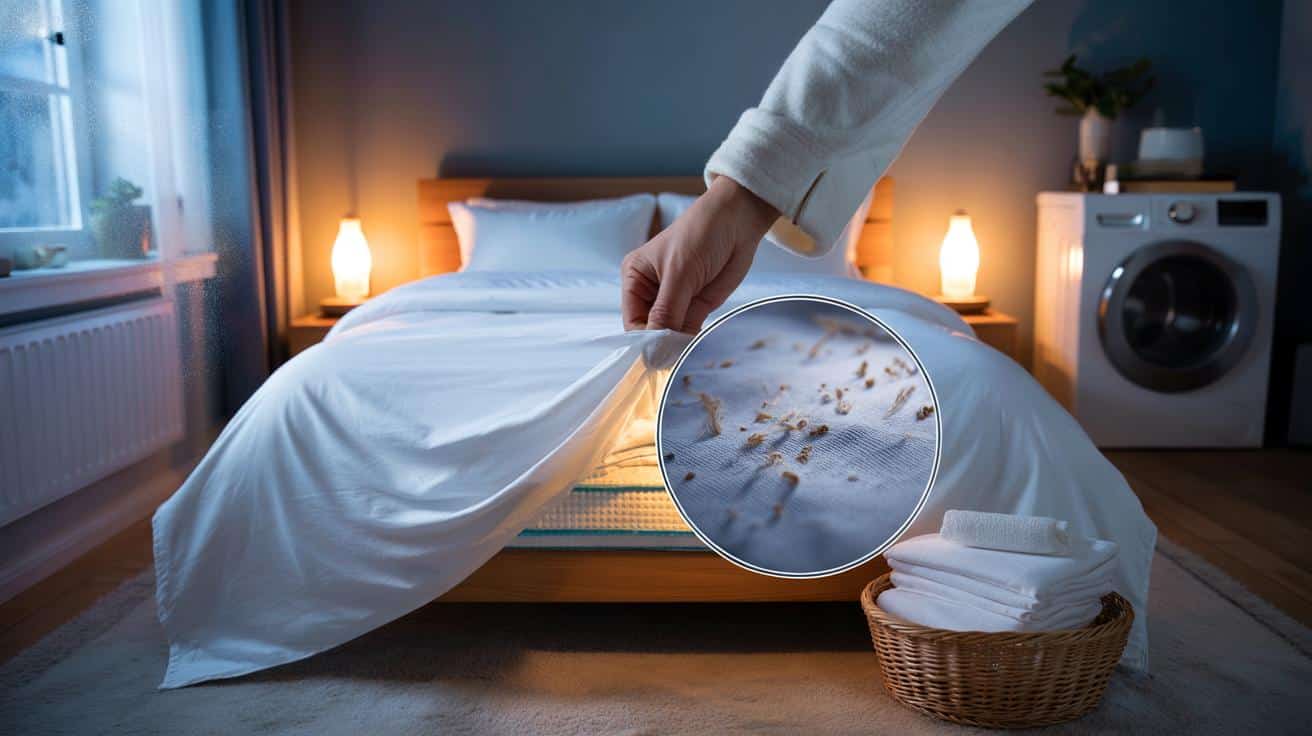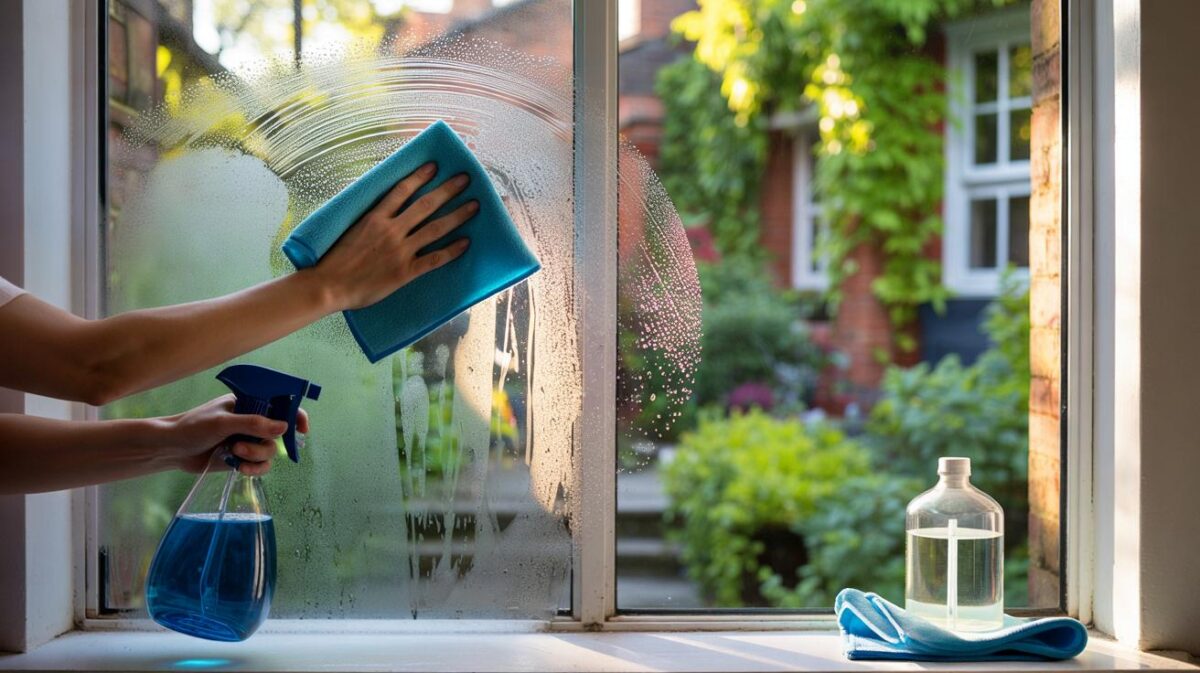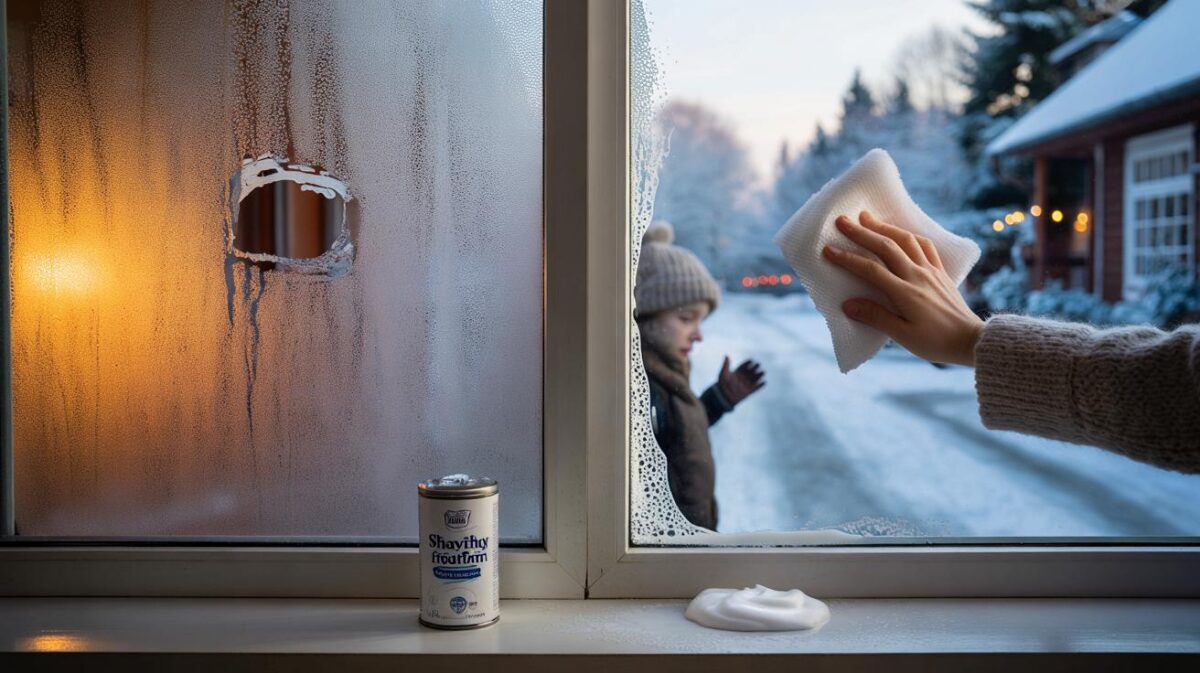Colder evenings change how your bed behaves. Heating dries the air, skin sheds faster, and heavier duvets trap more of what your body leaves behind. That mix shifts the right rhythm for laundry and the way you care for fabrics and pillows.
What winter really does to your bed
Your bed absorbs what your body produces, even when the room feels crisp. Mattresses and duvets are reservoirs for moisture, microscopic skin cells and mite allergens. Pyjamas reduce transfer, yet warmth and close contact still feed the build‑up.
On an average night, you can shed close to 1 litre of moisture through sweat and breath, even when you feel cool.
Dust mites thrive on humidity and flakes of skin. Numbers vary by home, but researchers estimate anything from hundreds of thousands to several million in a typical mattress. You cannot see them, yet their droppings aggravate asthma, rhinitis, eczema and some forms of eye and skin irritation. Winter heating creates pockets of warmth that suit mites, while central heating can lower relative humidity. That tug-of-war means routine matters more than one-off deep cleans.
The 7–15 day rule: when it holds, when it fails
Through winter, many households can stretch sheet changes to every 10–15 days, provided the bedroom stays cool and dry, you shower before bed and you wear pyjamas. That rhythm keeps odour down, reduces irritation and avoids needless laundry loads. If you skip the evening wash or sleep skin-on-fabric, aim for once a week.
Shower at night and keep the room at 16–18 °C with decent airflow: change sheets every 10–15 days; pillowcases more often.
If you shower at night
Clean skin plus nightwear and a cool, aired room buy you time. Rotate two sets so that laundry never gets postponed. A mattress protector catches sweat and makes weekly chores quicker.
If you shower in the morning
Daytime dust and city grime travel into bed. Keep a seven‑day cycle for sheets. Switch pillowcases mid‑week to protect skin and keep hair oils off the fabric.
Who should change more often
- Illness, fever, or heavy night sweats: every 3–4 days until symptoms settle.
- Allergies or asthma: weekly sheets; consider mite‑proof encasements.
- Acne or reactive skin: switch pillowcases every 2–3 days.
- Sleeping naked or sharing a bed: weekly changes as a baseline.
- Pets on the duvet: weekly changes; brush pets before bedtime.
- Babies and young children: weekly or immediately after spills or accidents.
- Rich night creams or hair oils: rotate pillowcases more frequently.
- White cotton sheets: consider shorter intervals to prevent visible dinginess.
Temperatures, cycles and fabrics
Most modern detergents clean well at 40 °C if you wash on schedule. Longer gaps need a hotter cycle or intensive programme to catch up on build‑up. Cotton tolerates 60 °C, which helps during colds, flu or allergy spikes. Linen can handle warmth but check the label; blends vary. Close zips on duvet covers, turn pillowcases inside out, and avoid cramming the drum, which traps soil in creases.
Go to 60 °C after illness or during allergy flare-ups if the label allows; wash the whole set together for a reset.
Drying matters as much as washing. Mites dislike dry conditions. Line drying in a heated, ventilated room or a gentle tumble to finish leaves fewer damp spots for microbes. If you own a condenser dryer, clean filters to reduce odour carry-over.
A quick winter routine you can actually keep
Think of bed care as small daily steps plus a calendar nudge. Air the room each morning with the duvet pulled back. Keep the thermostat modest at night, and use a breathable mattress protector. Mark one laundry day for sheets and a mid‑week reminder for pillowcases.
Open the window for 5–10 minutes each morning and let bedding breathe before making the bed.
| Situation | Winter sheets | Summer sheets | Pillowcases |
|---|---|---|---|
| Shower before bed, pyjamas, cool room | Every 10–15 days | Every 7 days | Every 3–7 days |
| Morning shower or sleep naked | Every 7 days | Every 7 days | Every 2–3 days |
| Allergies, asthma or eczema | Every 7 days | Every 7 days | Every 2–3 days |
| Illness or fever | Every 3–4 days | Every 3–4 days | Every 1–2 days |
| Pet sleeps on bed | Every 7 days | Every 7 days | Every 2–3 days |
| Babies and children | Every 7 days | Every 7 days | Every 3–7 days |
Beyond the sheets: the rest of the bed
Wash duvet covers with the sheet set. Clean duvets and pillows once or twice a year, or more often if they smell musty. Many synthetic pillows tolerate a 60 °C wash; feather fillings often prefer professional care. Always read labels. A quarterly vacuum of the mattress, plus a wipe of the bed frame, reduces dust pressure. Fit a washable protector on the mattress and pillows to trap allergens near the surface.
Make the maths work in winter
Energy bills push many households to delay laundry. You can keep hygiene and cut costs by sticking to 40 °C on time, running full but not stuffed loads, and spinning at higher speed to shorten drying. Two sheet sets per bed make the routine painless. If your home runs humid, a small dehumidifier or timed extractor keeps relative humidity near 40–60%, which helps both sleep quality and mite control.
Extra gains for skin and sleep
Clean bedding reduces friction, odour and congestion. If you use retinoids or heavy night creams, place a thin pillow towel on top and swap it every one to two nights. For sweaty sleepers, try breathable cotton percale rather than brushed flannel; it wicks better and dries faster in cool rooms. Keep the bedroom at 16–18 °C, skip late alcohol that drives night sweats, and hydrate earlier in the evening to avoid overheated awakenings.









This is the clearest breakdown I’ve read on why winter changes the laundry rhythm. The 7–15 day guideline makes sense when paired with cooler rooms and night showers. Loved the reminder to pull back the duvet in the morning and to rotate pillowcases mid‑week. Simple, doable advice.